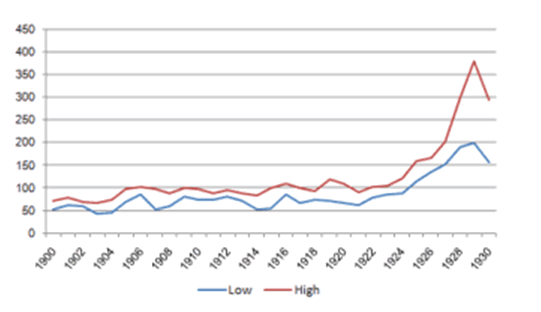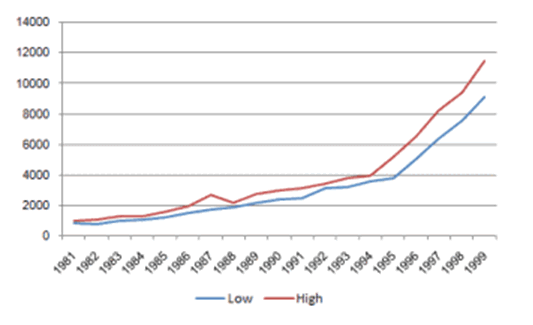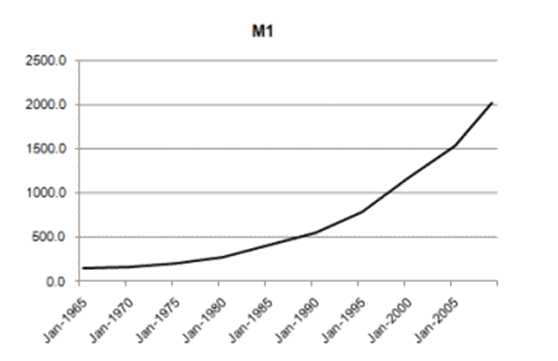What is Really Happening to the U.S. Economy?
Economics / Recession 2008 - 2010 Oct 05, 2009 - 08:22 AM GMTBy: Gerard_Jackson
 While America's corrupt media ties itself in knots trying to put a smiley face on the recession the economic commentariat is thrashing around in the hope of finding an explanation for the economy's refusal to respond to Obama's policies (most of them overlook the fact that the economy might be doing just that) and Bernanke's criminally loose monetary policy. There is no doubt in my mind that business -- big and small -- is taking into account Obama's impending flood of taxes as well as the political support he is throwing behind job-destroying unions. I believe an administration -- any administration -- that ignores business expectations is committing a grave error of judgment.
While America's corrupt media ties itself in knots trying to put a smiley face on the recession the economic commentariat is thrashing around in the hope of finding an explanation for the economy's refusal to respond to Obama's policies (most of them overlook the fact that the economy might be doing just that) and Bernanke's criminally loose monetary policy. There is no doubt in my mind that business -- big and small -- is taking into account Obama's impending flood of taxes as well as the political support he is throwing behind job-destroying unions. I believe an administration -- any administration -- that ignores business expectations is committing a grave error of judgment.
That this is precisely what Obama and his Chicago cronies are doing is supported by rumours that they are ignoring the counsel of Rubin, Volcker and the rest of the White House economic advisors. No one should be surprised at this since leftwing ideologues have never had any real time for economics. For them, politics trumps all, including economic laws -- or so they think. Nevertheless, one should never allow personal feelings to cloud one's judgement. The fact remains that this recession began before Obama was elected just as the last recession began -- irrespective of what hardcore Democrats assert -- before Bush won the 2000 election.
What needs to be explained is what makes this recession so different from the rest of the post-war recessions. Let us take a look at the little-known 1920-21 depression. This was the most rapid economic contraction in US history. Wholesale prices peaked in May 1920 and then plummeted, reaching 45 per cent by May 1921. Raw producer prices dropped by 41 per cent from 1920 to 1921 and the prices of all processed goods dropped in the same period by 32 per cent. It needs to be borne in mind that the wholesale price index covered a far greater range of goods than the consumer price index which fell by just over 11 per cent. Moreover, the wholesale price index included business inputs.
We are now reminded of a fundamental fact: that during a recession consumer goods prices rise relative to producer goods prices even when all prices are falling. This still holds even where prices are not allowed to fall. In this situation consumer prices rise fast than producer prices.
Although unemployment rose from 1.2 per cent in 1920 to 11.2 per cent in 1921, it fell to 6.8 per cent the following year and then to 1.7 per cent in 1923. Any fall in real wages was checked not by unions or government decree but by the rapid process of capital accumulation that occurred from 1914. This episode demonstrated that what really matters is not wage rates (total labour costs) per se but the cost of labour relative to the value of labour's product.
When we turn to the Great depression we find a very different situation. Whereas the 1920-21 depression was the sharpest in US history and recovery was rapid the depression starting in 1929 turned into the most intractable contraction in US history. The one thing that clearly marks out the Great Depression from previous depressions was the government's policy of fixing wage rates and prices above market clearing levels. This was an astonishingly destructive policy that more and more economists are only now coming to realise is what paralysed recovery.
However, it does seem to me -- and I fear I may now entering the world of conjecture -- that there is one feature of the 1929 depression and the current recession that is not shared by the 1920-21 crisis that might explain why the US would be facing a sluggish recovery even if it had the good fortune to be governed by an extremely competent administration. What got me thinking along these lines was the interesting fact that some contemporary observers noted that from about 1927 banks found that increased demand deposits appeared to be largely unneeded by business which led them to shift funds to time deposits that paid interest. (C. A. Phillips, T. F. McManus and R. W. Nelson, Banking and the Business Cycle, Macmillan and Company, 1937, p. 99).
Benjamin M. Anderson, who was chief economist for the Chase Manhattan Bank from 1920 to 1937, observed that by the late 1920s corporations had accumulated large reserves of cash because there appeared to be insufficient investment opportunities. (Benjamin M. Anderson, Economics and the Public Welfare: A Financial and Economic History of the United States 1914-1946, LibertyPress, 1979, pp. 379-80). Yet the same phenomenon was not observed during the boom that preceded the 1920-21 depression, suggesting that the boom was brought to a halt before this phenomenon could emerge and hence help fuel a stock market frenzy. The chart below shows that from 1900 up to 1924 the Industrial Dow Jones was comparatively stable, after which it zoomed upwards.

Obviously the 1920s experienced a massive boom in asset prices. When the economy went into depression in 1920-1922 the necessary adjustments were painful but comparatively swift and business lending resumed fairly quickly. But the 1929 depression found itself with a mass of capital assets whose values had been hugely inflated. This -- in my view -- was bound to slow any recovery as the financial sector strove to restore its balance sheets. For instance, if a lending institution had assets of $1 billion and a net worth of $50 million (this is 1930) then it would only take a 10 per cent fall in the value of its assets to wipe out its net worth. Therefore, in a severe climate of diving asset prices institutions would be scrambling to stay afloat.
Is this the case today? The following chart shows the Dow rising quickly from 1981 to 1994 after which growth rapidly accelerated. The next chart shows that the growth in the Dow correlating with the growth of the money supply, suggesting that the 1920s comparison may not be far off.


The above seems to confirm Fritz Machlup's view of the period as one in which the
... continual rise of stock prices cannot be explained by improved conditions of production or by increased voluntary savings, but only by an inflationary credit supply. (Fritz Machlup The Stock Market, Credit and Capital Formation, William Hodge and Company Limited, 1940, p. 290).
But why would investment opportunities dry up? They don't. What happens is that monetary expansion distorts the pattern of production by raising the rate of return in some line at the expense of others which then makes them unprofitable. (F. A. Hayek, in Profits, Interest and Investment, Augustus M. Kelley Publishers, 1975, pp. 34-35). Now this will not present a problem if the monetary authorities terminate the boom in time. If it is allowed to continue then the only way to prevent these 'unprofitable' sectors from going under is to accelerate the money supply. Naturally, more and more credit will have to be injected into the economy to obtain the same level of output. In the meantime this easy money policy will be fuelling more and more speculation.
If this explanation is the correct one then attempts to revive the US economy by encouraging consumer spending will fail. If consumer spending were to rapidly expand the result would be a highly unbalanced recovery that would keep the higher stages of production depressed resulting in another "rustbelt".
By Gerard Jackson
BrookesNews.Com
Gerard Jackson is Brookes' economics editor.
Copyright © 2009 Gerard Jackson
Gerard Jackson Archive |
© 2005-2022 http://www.MarketOracle.co.uk - The Market Oracle is a FREE Daily Financial Markets Analysis & Forecasting online publication.



